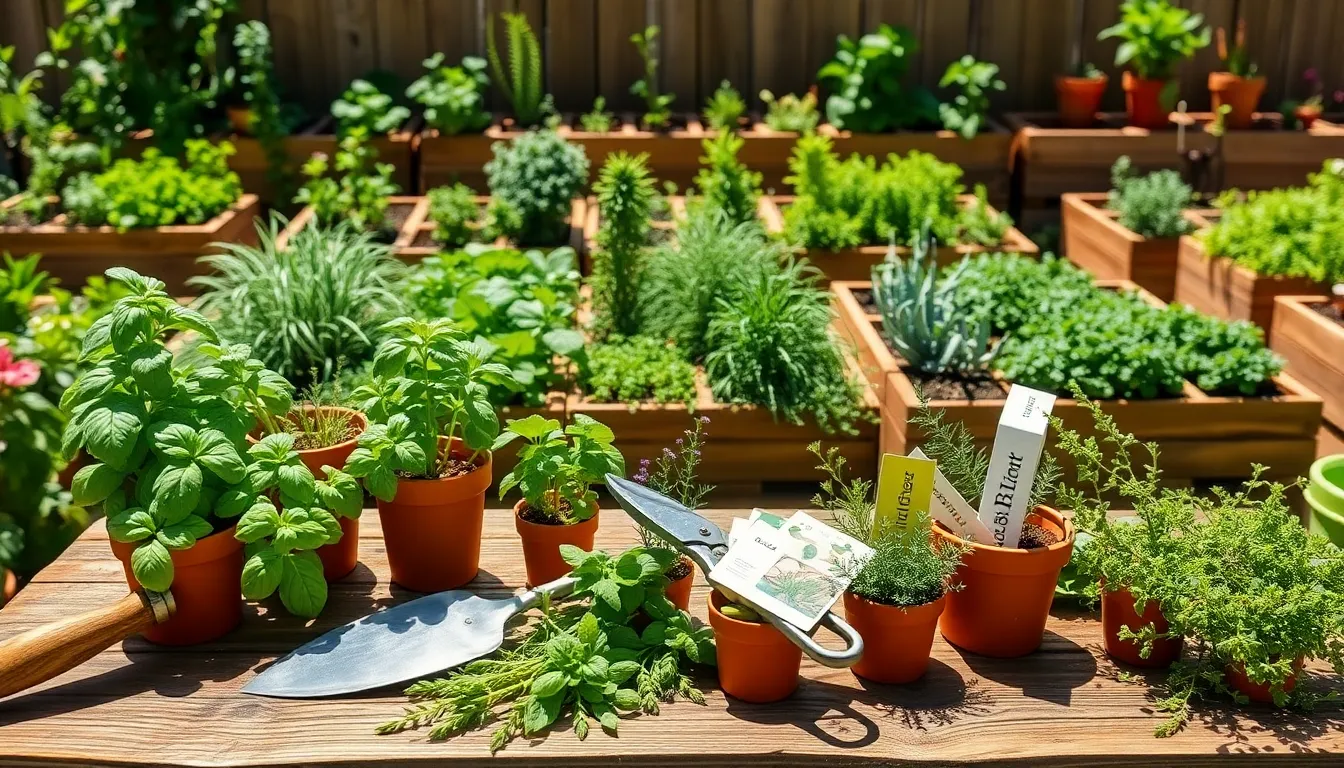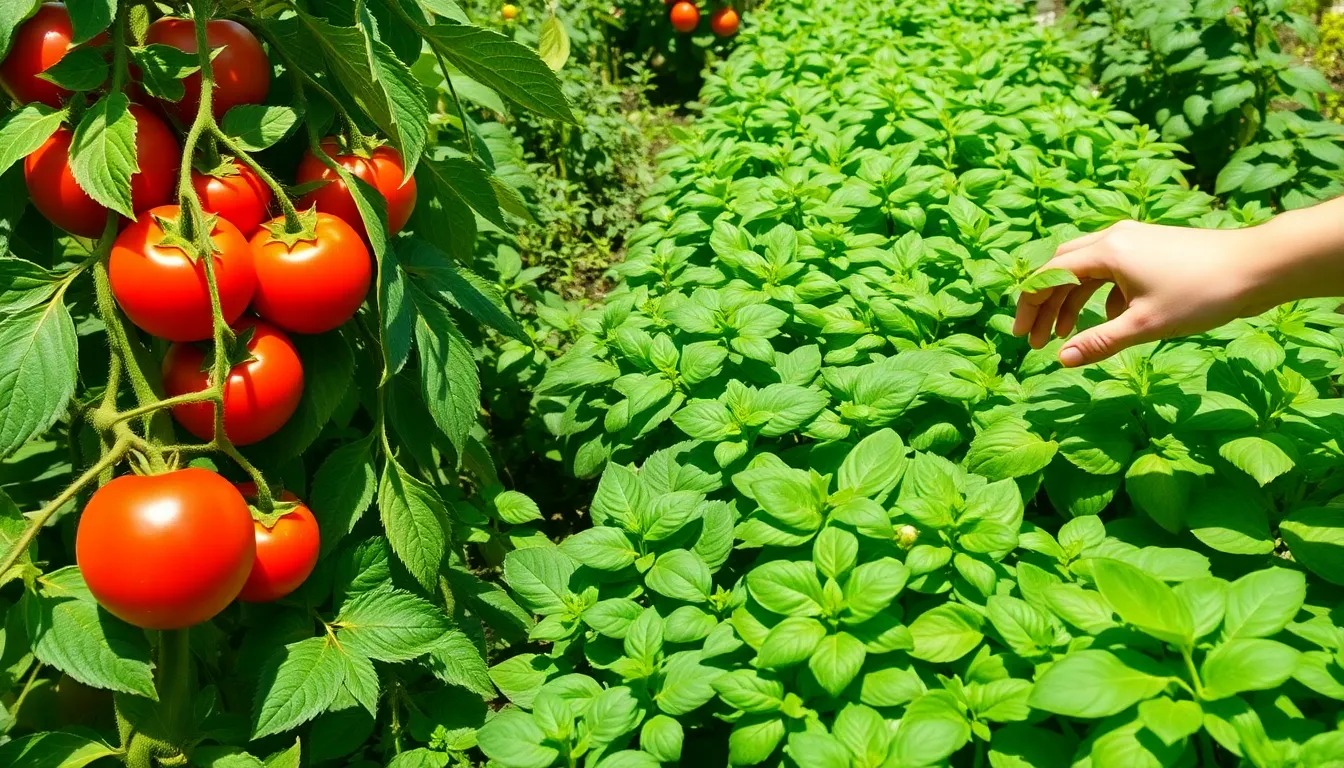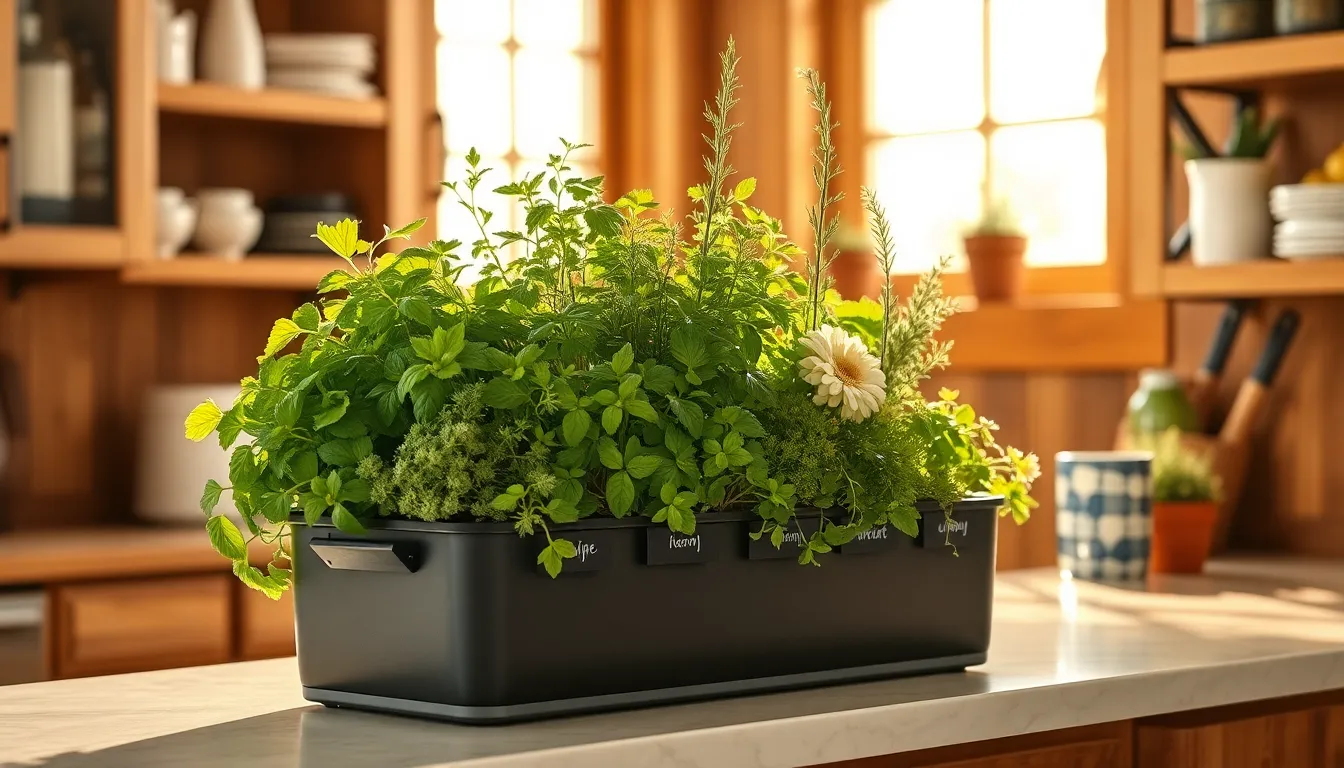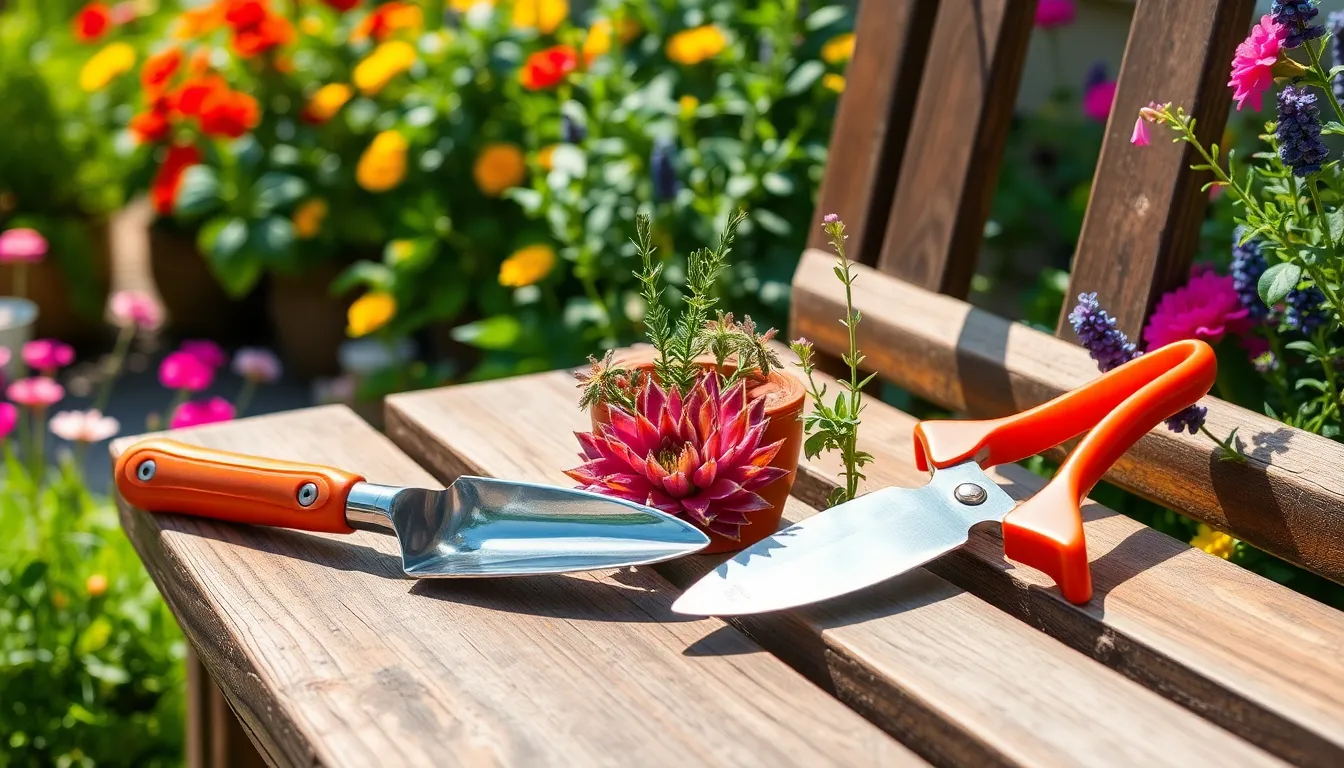Herb gardening is a delightful pursuit, offering both the novice and the seasoned gardener a chance to connect with nature while enhancing their culinary creations. Diving into the world of herbs can transform your garden into a fragrant sanctuary, and with the right tools, this journey becomes not just manageable, but immensely rewarding.
For those just starting out, the prospect of setting up an herb garden can feel daunting, yet it is one of the most accessible forms of gardening. By equipping yourself with essential tools, you not only ensure the health and vitality of your plants but also make the process more enjoyable and efficient.
Experienced gardeners will appreciate how the right tools can elevate their herb gardening experience, allowing them to focus on nurturing their plants rather than wrestling with inadequate equipment. This article will guide you through 15 must-have tools, each selected to enhance your gardening experience, whether you’re cultivating a few pots on a windowsill or managing a sprawling herb bed.
Prepare to discover tools that will become indispensable allies in your gardening endeavors, from ergonomic hand tools to innovative watering solutions. Together, we’ll delve into why these tools are key to success, ensuring your herb garden flourishes with vibrant life and flavor. Join us as we explore the essentials that will transform your gardening routine and elevate your herb-growing skills.
Essential Herb Pruning Shears
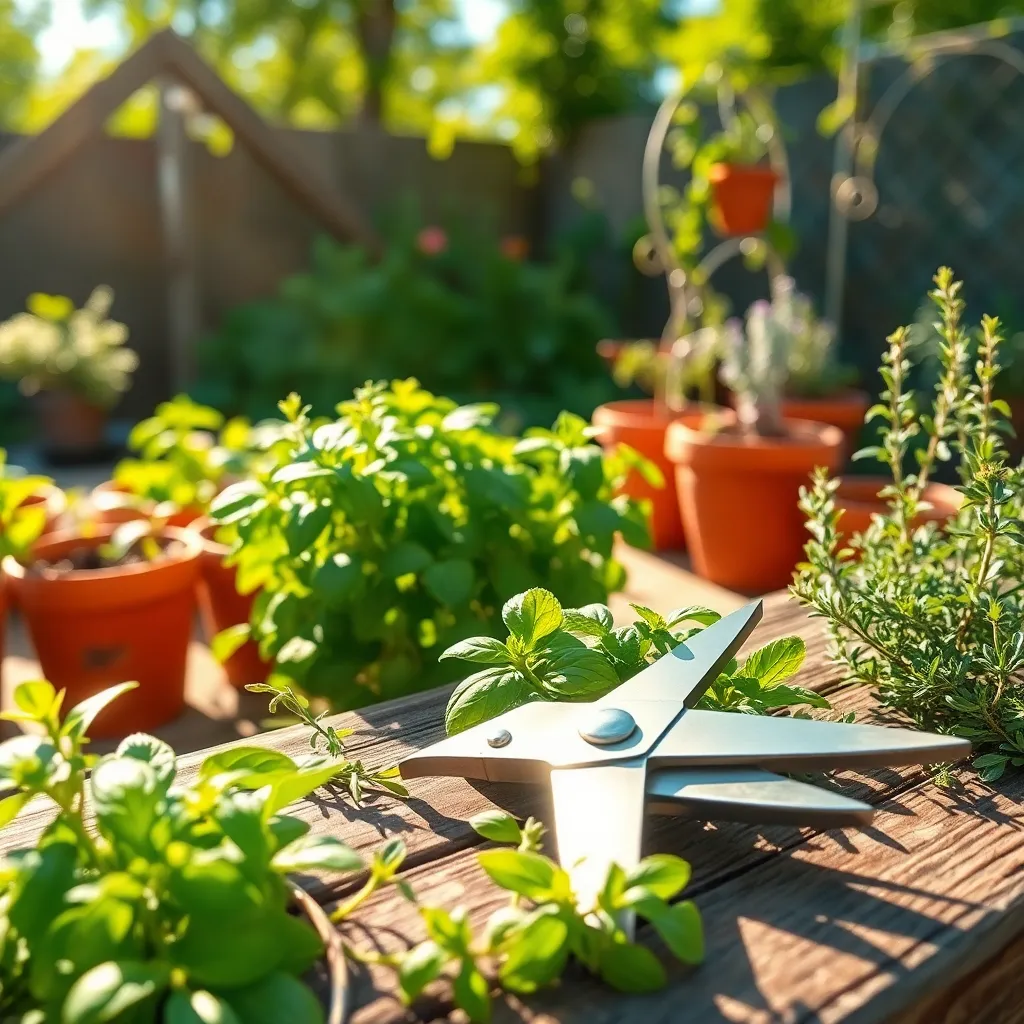
Pruning shears are an essential tool for anyone serious about herb gardening, as they help maintain the health and productivity of your plants. Regular pruning encourages bushier growth and prevents herbs from becoming leggy or overgrown.
When selecting pruning shears, look for a pair with a sharp, stainless steel blade to ensure clean cuts that minimize plant stress. It’s also important to choose a size and grip that feels comfortable in your hand, allowing precise control when trimming delicate herb stems.
For beginners, start by pruning herbs like basil and mint frequently to promote new growth. Cut just above a leaf node to encourage the plant to branch out and produce more foliage.
Advanced gardeners might consider investing in shears with replaceable blades or adjustable tension for prolonged use and versatility. Remember to clean your shears regularly with rubbing alcohol to prevent the spread of diseases between plants and ensure they remain in top condition.
Durable Garden Gloves for Herbs
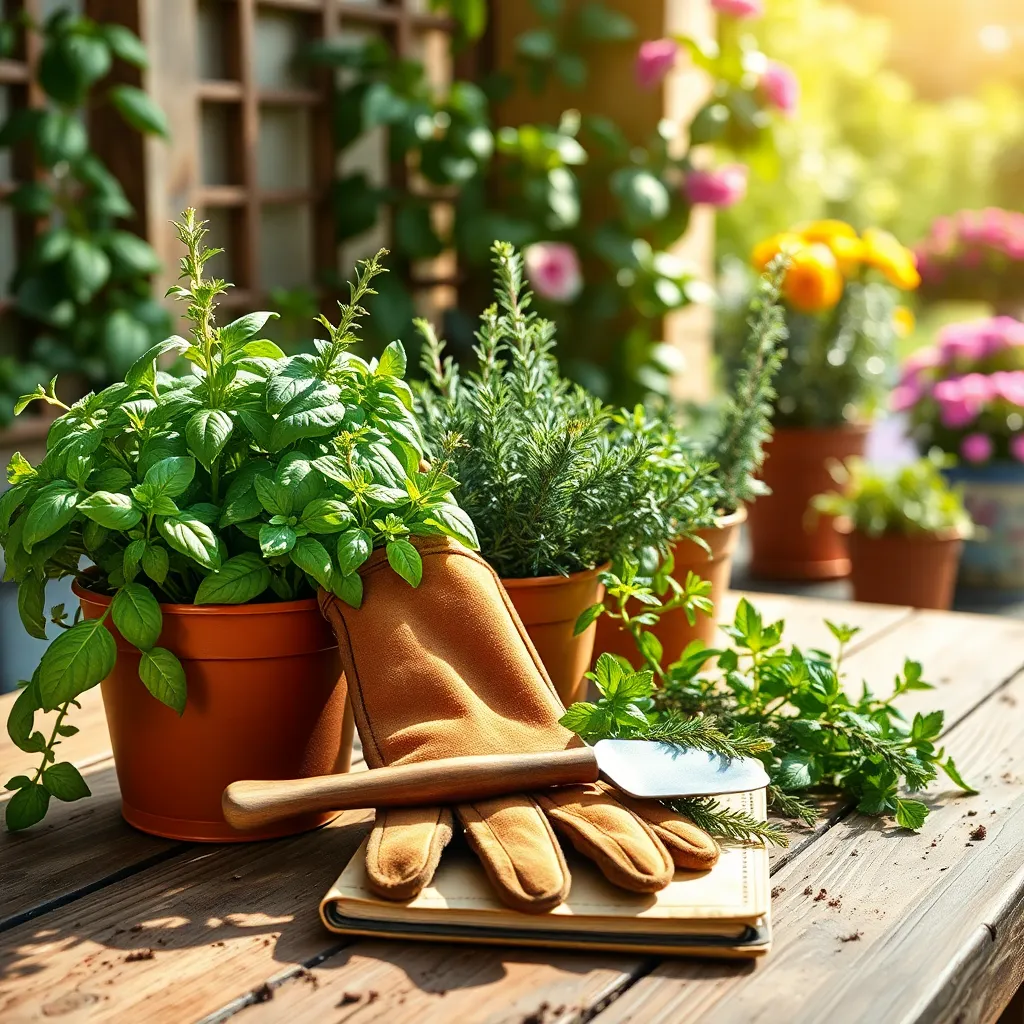
Gardening gloves are an essential tool for anyone working with herbs, as they protect your hands from thorns and dirt while providing a firm grip. Choosing **durable gloves** made from materials like leather or reinforced synthetic fibers will ensure they last through various gardening tasks.
Properly fitting gloves enhance dexterity, which is crucial for delicate work like handling herbs. **Look for gloves** that offer a snug fit but still allow your fingers to move freely, ensuring you can easily plant, prune, or harvest your herbs without sacrificing precision.
For those who spend a lot of time in the garden, gloves with breathable materials are ideal to prevent sweaty hands. **Consider gloves** with a breathable back or moisture-wicking properties to keep your hands comfortable, particularly in warmer climates or during long gardening sessions.
Advanced gardeners might appreciate gloves with added features like touch-screen compatibility, which allows you to use your smartphone without removing them. This can be especially useful for checking plant care apps or documenting your garden’s progress with photos while maintaining clean hands.
Precision Planting with Hand Trowels
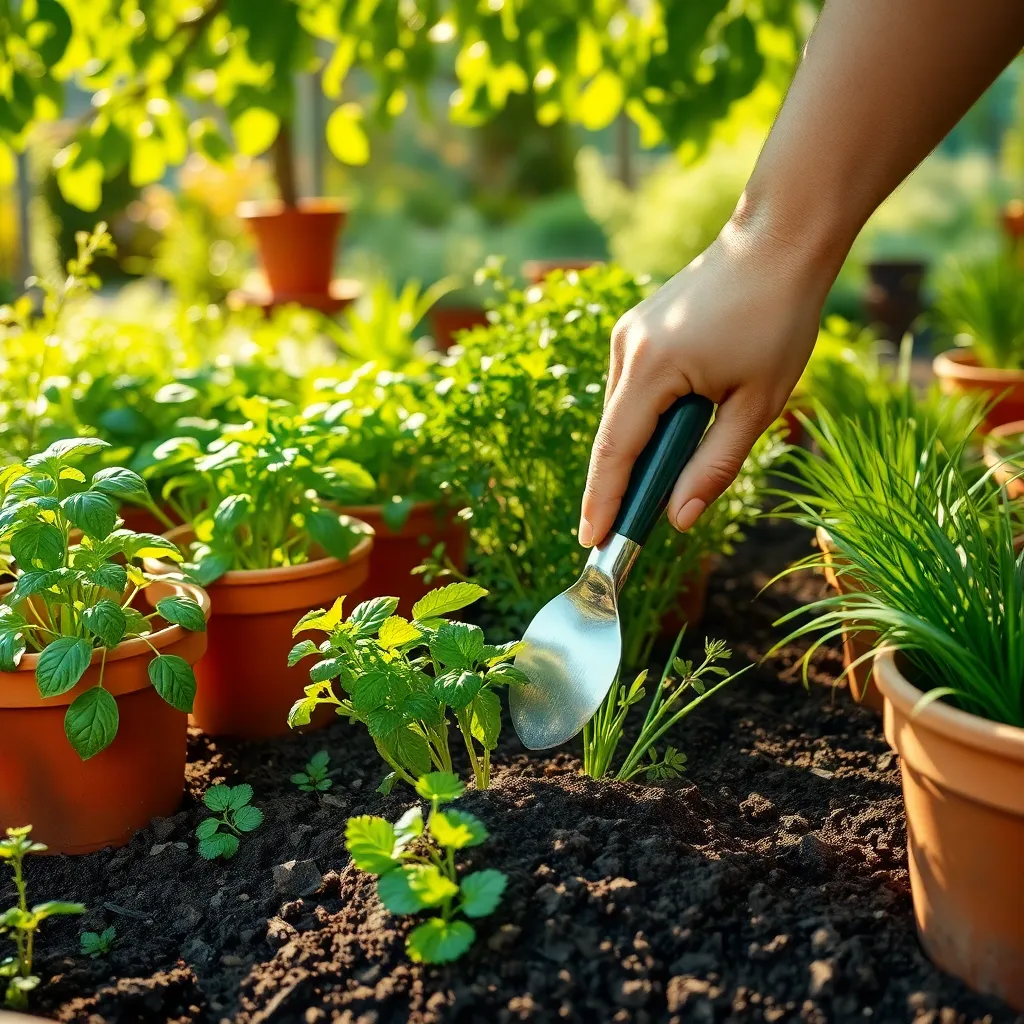
A hand trowel is an essential tool for precision planting, allowing gardeners to transplant seedlings and bulbs with ease. Its compact size and pointed blade make it ideal for working in tight spaces, such as herb gardens, where plants often grow closely together.
For beginners, using a hand trowel can help ensure seedlings are planted at the correct depth, which is crucial for their growth. Most herbs require planting at a depth where the root ball is just covered with soil, which a hand trowel can easily achieve with its measurement markings.
Experienced gardeners can benefit from the hand trowel’s versatility in soil preparation and weed removal. Loosening soil around established herbs can improve aeration and nutrient absorption, while a trowel’s narrow edge allows for precise weeding without disturbing plant roots.
When selecting a hand trowel, choose one with a comfortable grip, especially if you plan to spend extended periods gardening. Stainless steel blades are recommended for durability and rust resistance, ensuring your tool remains effective season after season.
Versatile Herb Snippers
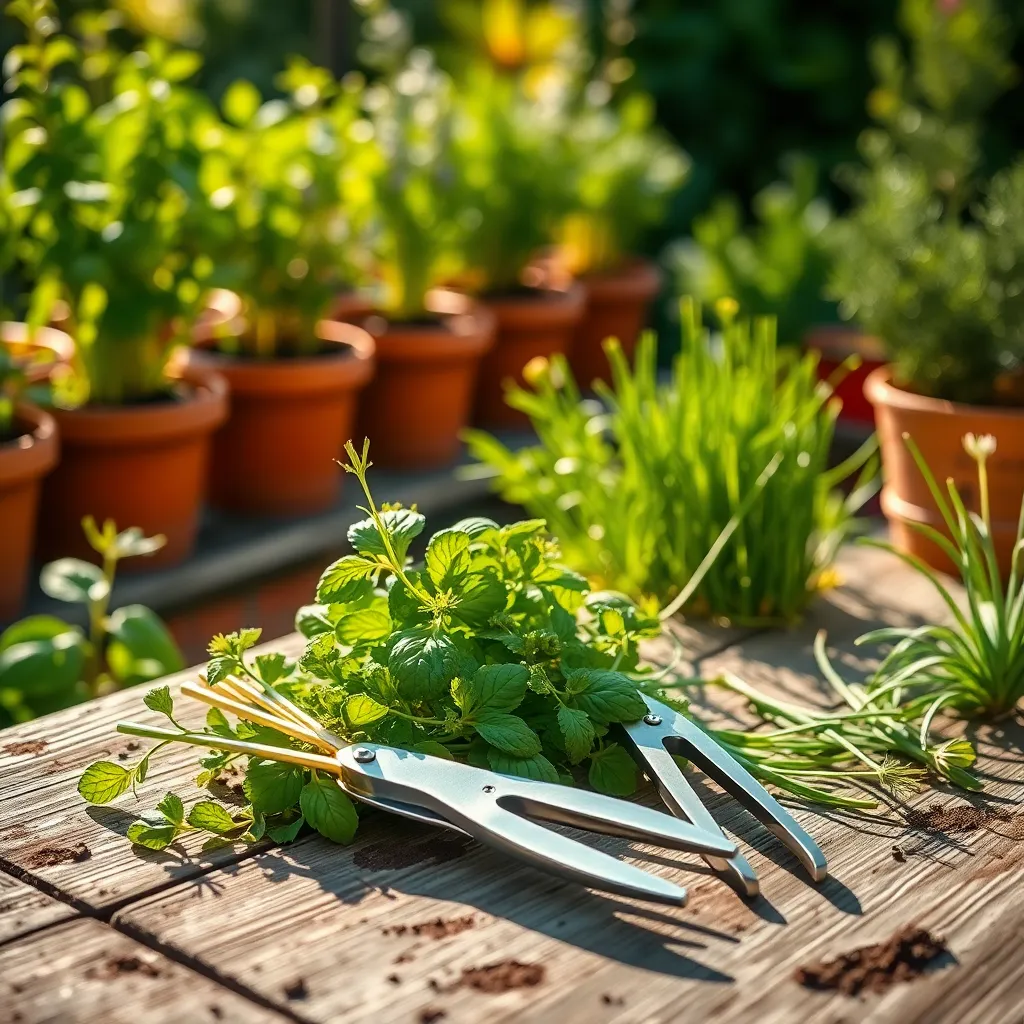
Herb snippers are an essential tool in any herb gardener’s toolkit, offering both precision and ease of use. Designed for meticulous harvesting, these sharp, small scissors allow you to snip herbs without damaging the plant, ensuring continued growth.
When selecting herb snippers, look for those made of stainless steel to prevent rust and maintain sharpness. Choose a pair with comfortable, ergonomic handles to reduce hand fatigue, especially when working with larger herb gardens.
To use herb snippers effectively, always cut above a leaf node to encourage branching and increase yield. Regularly cleaning the blades with rubbing alcohol helps prevent the spread of plant diseases, keeping your herbs healthy and thriving.
For advanced gardeners, consider using herb snippers for more than just harvesting. They can also be used for pruning delicate stems, ensuring your plants maintain an attractive shape and optimal airflow, reducing the risk of mold and mildew.
Efficient Watering Cans for Herbs
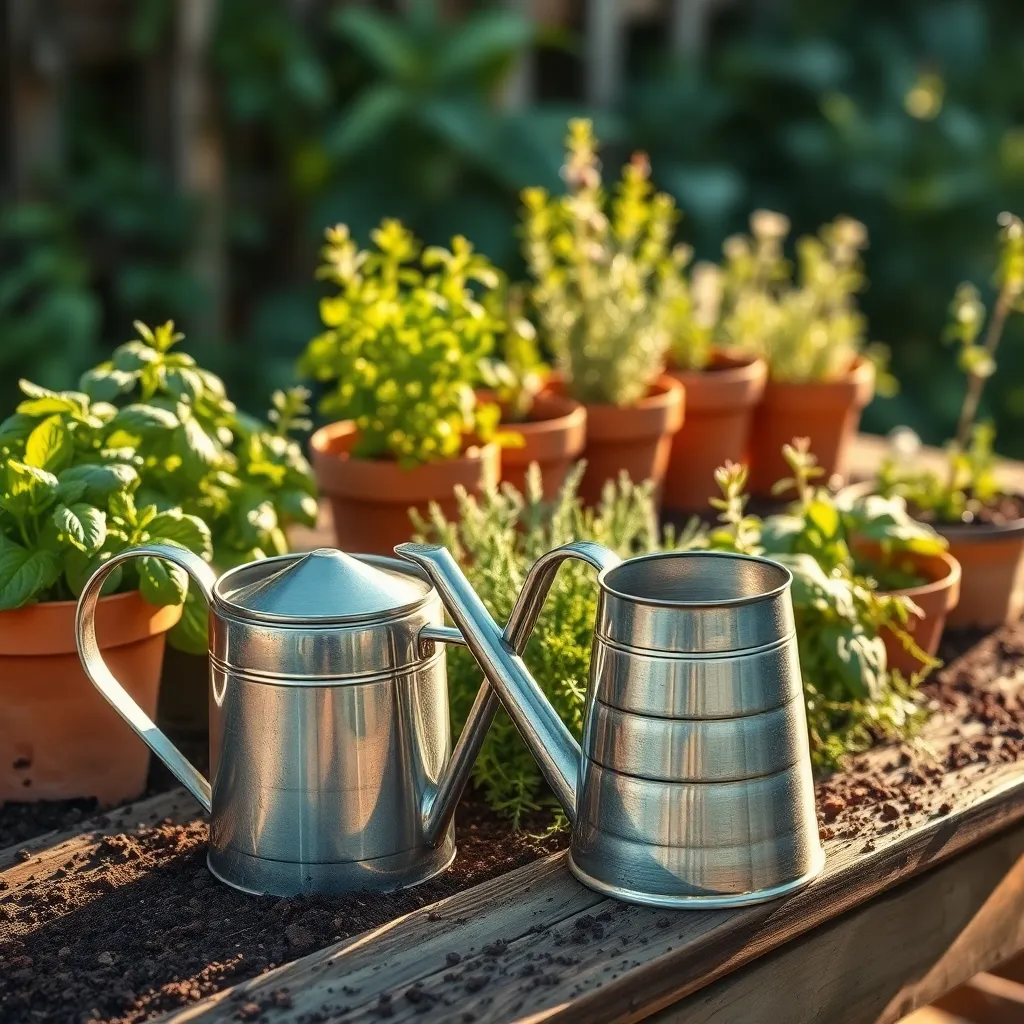
Watering cans designed for herbs are a must-have tool for any herb gardener. They allow you to deliver just the right amount of water to your plants, preventing overwatering which can lead to root rot.
Using a watering can with a narrow spout is ideal for herbs, as it enables targeted watering at the base of the plant. This approach minimizes water contact with the leaves, reducing the risk of fungal diseases.
For beginners, it’s important to water herbs when the top inch of the soil feels dry to the touch. More experienced gardeners might prefer to check moisture levels by inserting a finger into the soil, ensuring it is neither too dry nor too soggy.
Consider using rainwater or distilled water in your watering can, as herbs can be sensitive to the chlorine found in tap water. If you use tap water, let it sit for a day to allow chemicals to dissipate before using it on your herbs.
Incorporating a lightweight, ergonomic watering can into your gardening routine can make the task more enjoyable and efficient. This is especially beneficial when dealing with larger herb gardens, where frequent watering is essential during dry spells.
Comfortable Kneeling Pads
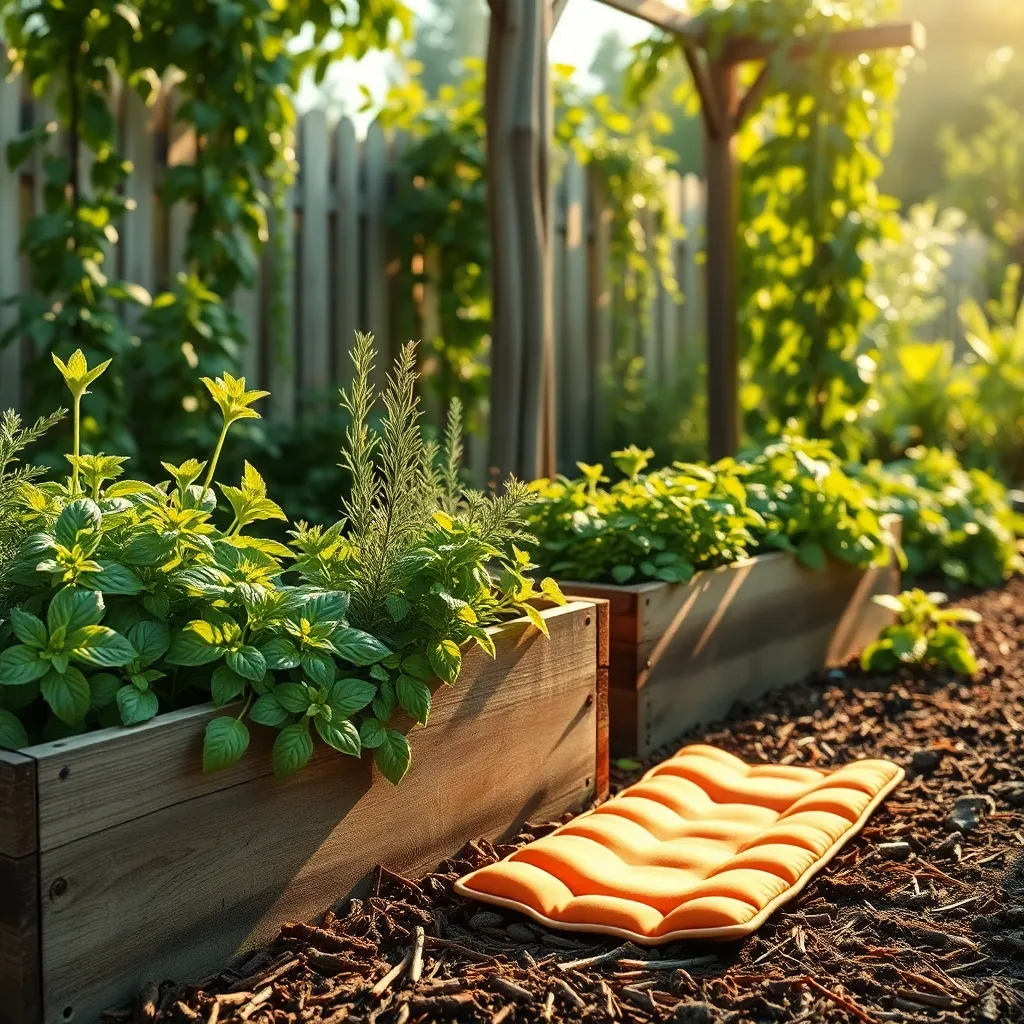
Gardening often involves kneeling down, and this can be tough on your knees. Comfortable kneeling pads provide the cushioning needed to protect joints, making your gardening sessions more enjoyable.
While tending to herbs like basil or thyme, you’ll find yourself frequently working close to the ground. Using a quality kneeling pad not only offers comfort but also helps maintain proper posture, reducing strain on your back and legs.
Choosing a kneeling pad with a waterproof and easy-to-clean surface can be highly beneficial. This ensures that even when working in damp soil, your pad remains clean and dry, ready for the next use.
For more advanced gardeners, a kneeling pad with additional compartments can be a game-changer. These compartments allow you to keep small tools like pruners or seed packets within reach, maximizing efficiency while you garden.
High-Quality Herb Planters
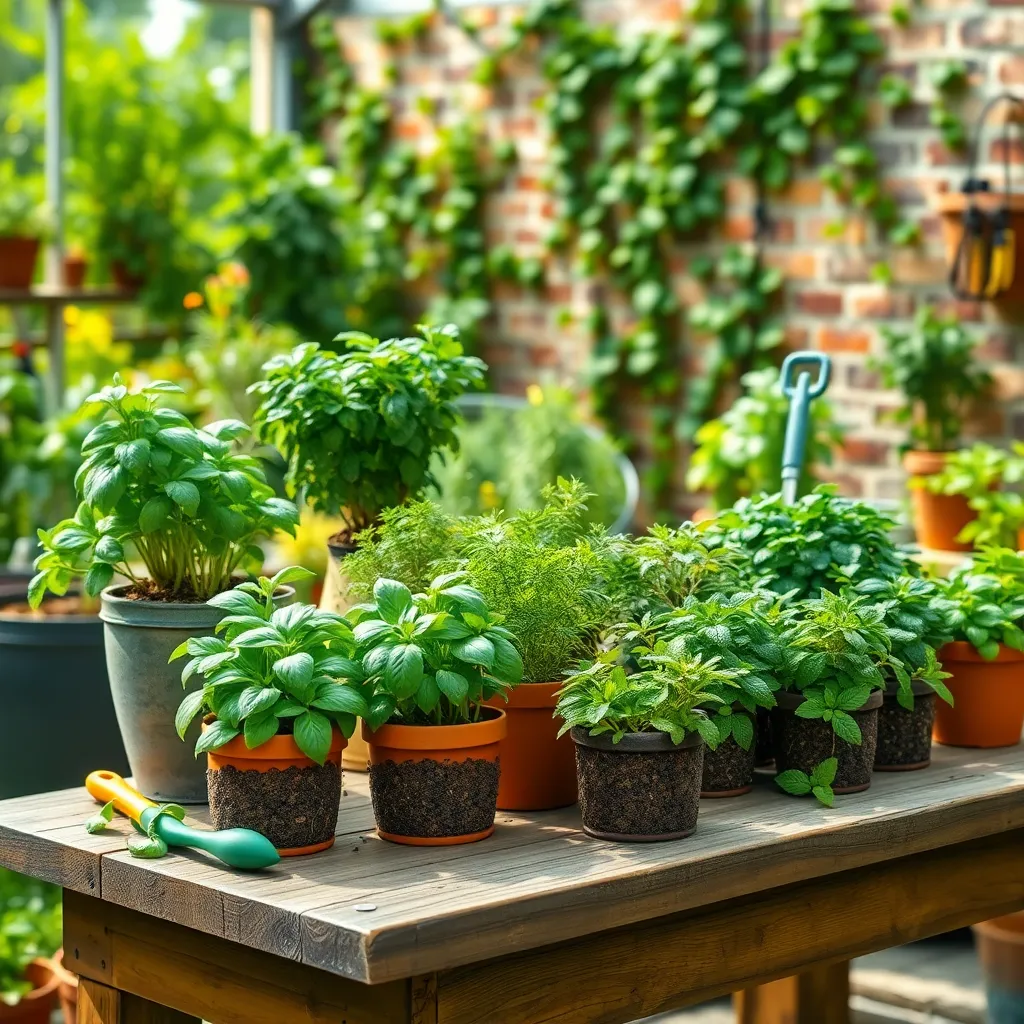
Investing in high-quality herb planters can significantly enhance your gardening experience, providing both aesthetic appeal and functional benefits. These planters typically offer excellent drainage and airflow, which are crucial for the healthy growth of herbs.
When selecting a planter, consider materials like terracotta, ceramic, or high-quality plastic that can withstand various weather conditions. Ensure that your planters have adequate drainage holes to prevent waterlogging, which can lead to root rot.
It’s important to match the size of the planter with the growth requirements of your herbs. For instance, herbs like basil and mint thrive in medium-sized planters, while rosemary and thyme benefit from larger spaces to allow their roots to spread.
For beginners, starting with a basic potting mix enriched with organic matter can provide a solid foundation for herb growth. More experienced gardeners might consider creating a customized soil blend, incorporating perlite or vermiculite for enhanced aeration and drainage.
Watering frequency is another crucial factor to consider when using planters. Herbs generally prefer to dry out slightly between waterings, so check the soil moisture regularly and water when the top inch feels dry.
Reliable Herb Garden Markers
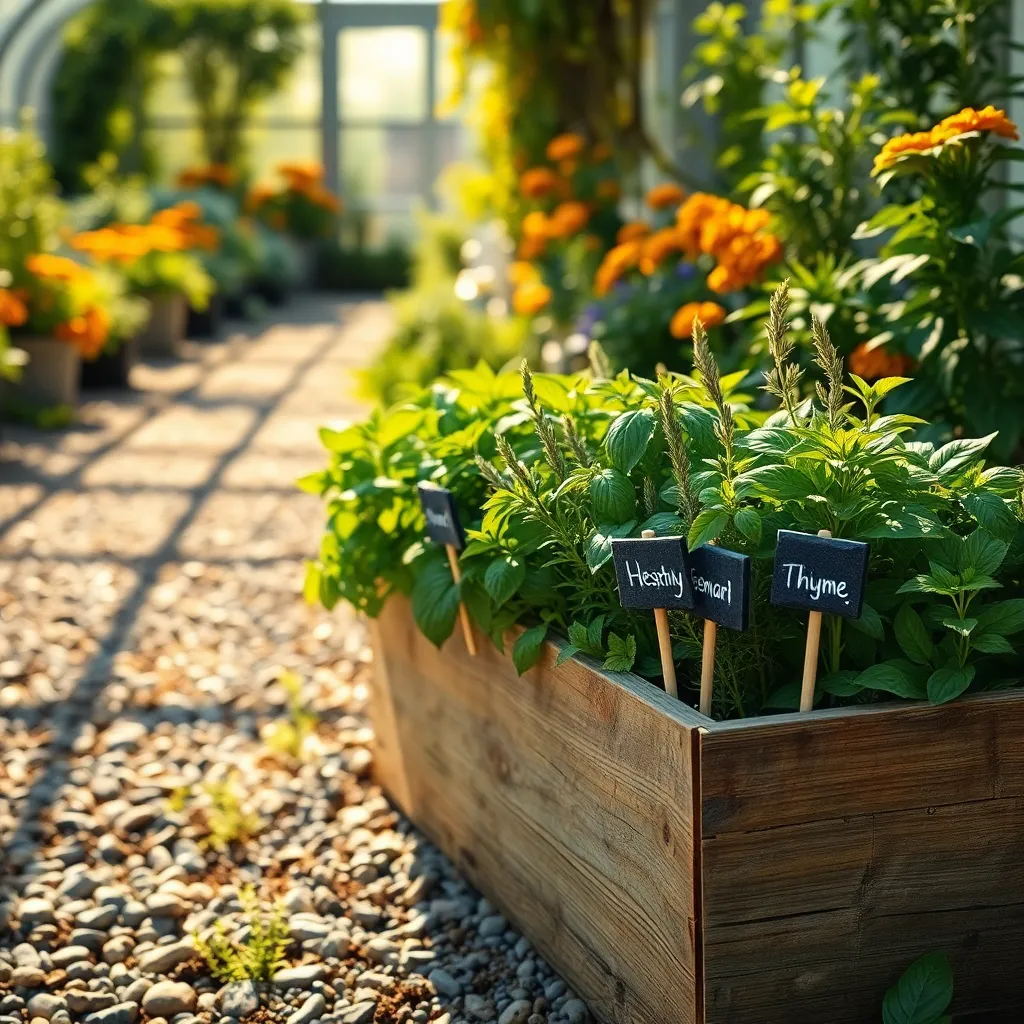
Reliable herb garden markers are essential for keeping track of your plant varieties, especially if you’re growing multiple types of herbs. Using durable materials like metal or stone ensures the markers withstand various weather conditions and last throughout the growing season.
Consider using markers with a smooth surface for easy labeling. Waterproof pens or paint markers are recommended to prevent fading and ensure the labels remain legible over time.
For those looking to add a personal touch, customized markers can also serve as decorative elements in your garden. Wooden markers are a popular choice, but make sure to seal them with a weatherproof finish to prevent rot.
Advanced gardeners might opt for digital plant tags that connect with smartphone apps. These allow you to track watering schedules, sunlight needs, and growth progress, offering a high-tech approach to garden management.
Handy Herb Harvesting Baskets
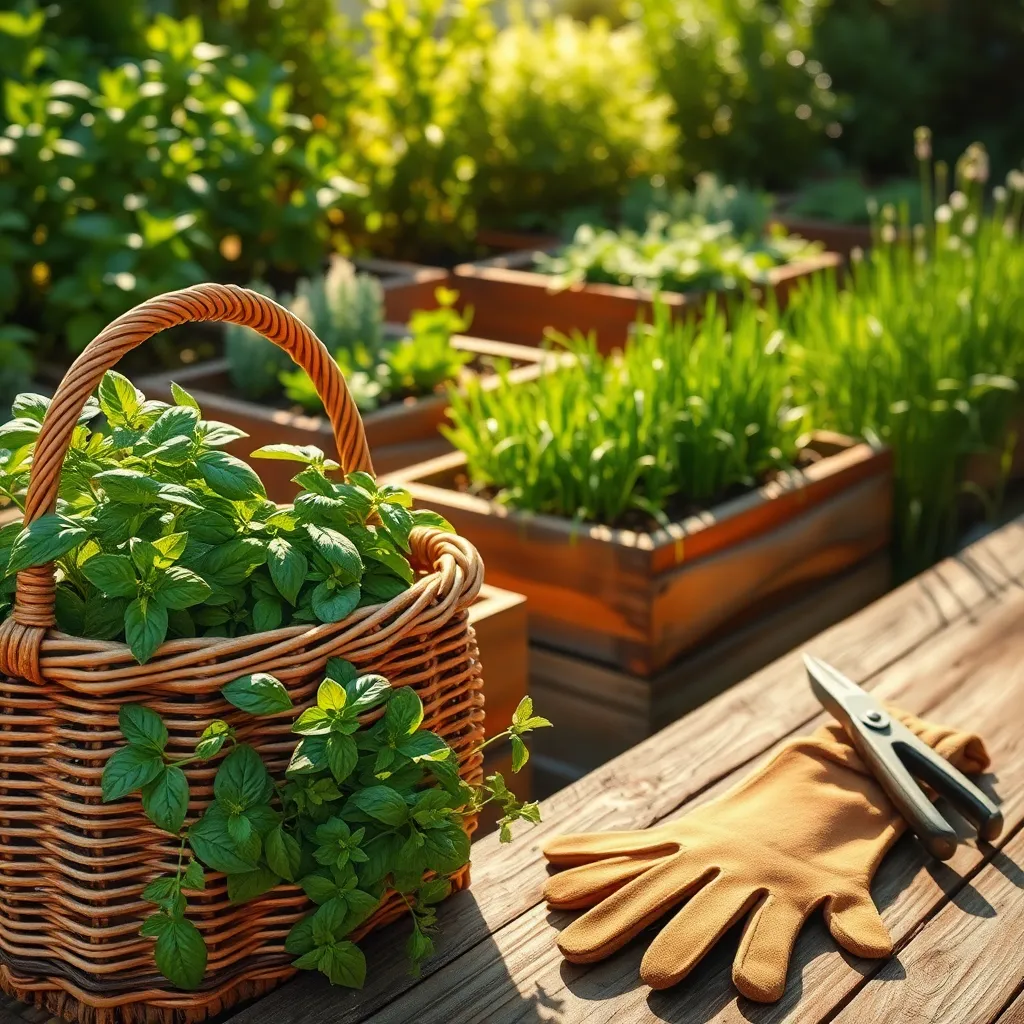
Harvesting baskets are an essential tool for any herb gardener, providing a convenient way to gather and transport your fresh herbs. Choosing the right basket can make your harvesting process smoother and help keep your herbs in optimal condition.
Opt for baskets made from natural materials like wicker or bamboo, which allow air circulation to keep your herbs fresh. Look for baskets with handles that are comfortable to hold, especially if you plan to harvest large quantities at once.
When harvesting herbs, it’s important to pick them at the right time to ensure peak flavor and nutrition. Early morning is the best time to harvest, as the essential oils in the leaves are at their highest concentration.
For beginners, a simple wicker basket will suffice, but more experienced gardeners might appreciate baskets with compartments. These are especially useful for keeping different herbs separate and organized during harvesting.
Soil Test Kits for Optimal Growth
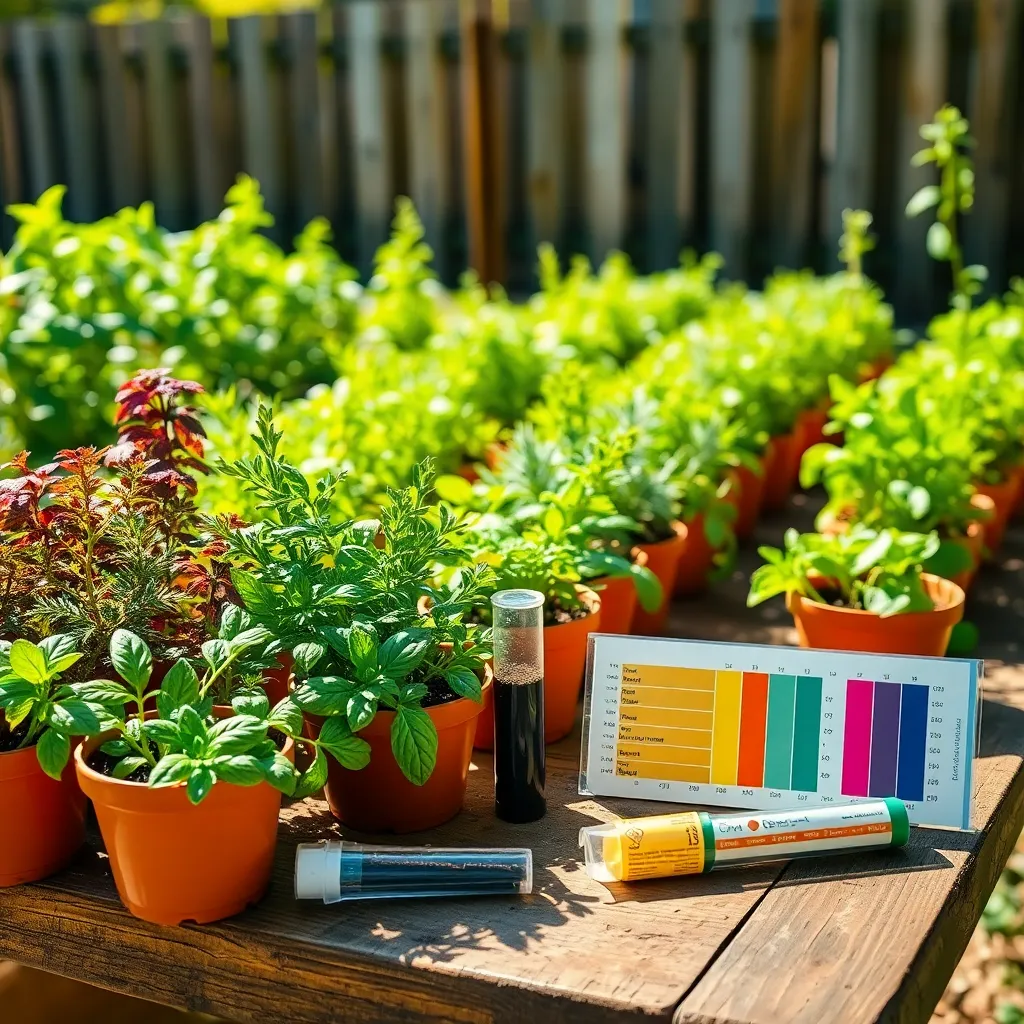
Understanding your soil’s nutrient levels is crucial for herb gardening success. Soil test kits provide a simple and effective way to analyze your soil’s pH, nitrogen, phosphorus, and potassium levels.
Before planting, use a soil test kit to determine if your soil needs amendments. This ensures that your herbs have the optimal growing conditions right from the start, enhancing their growth and flavor.
For beginners, start with a basic soil test kit that can easily be purchased online or at gardening centers. These kits usually come with clear instructions and are straightforward to use, making them ideal for those new to gardening.
Experienced gardeners might opt for more advanced kits that offer detailed insights into micronutrient levels. Such kits can guide you in making precise adjustments to your soil, helping to optimize plant health and yield.
Once you have your soil test results, you can amend your soil accordingly. If your soil is too acidic, for instance, consider adding lime to raise the pH; if it’s too alkaline, add sulfur to lower it.
Remember that the needs of different herbs can vary, so tailor your soil amendments to the specific requirements of the herbs you are growing. This targeted approach will enhance your garden’s productivity and ensure that your herbs thrive.
Compact Herb Garden Hoes
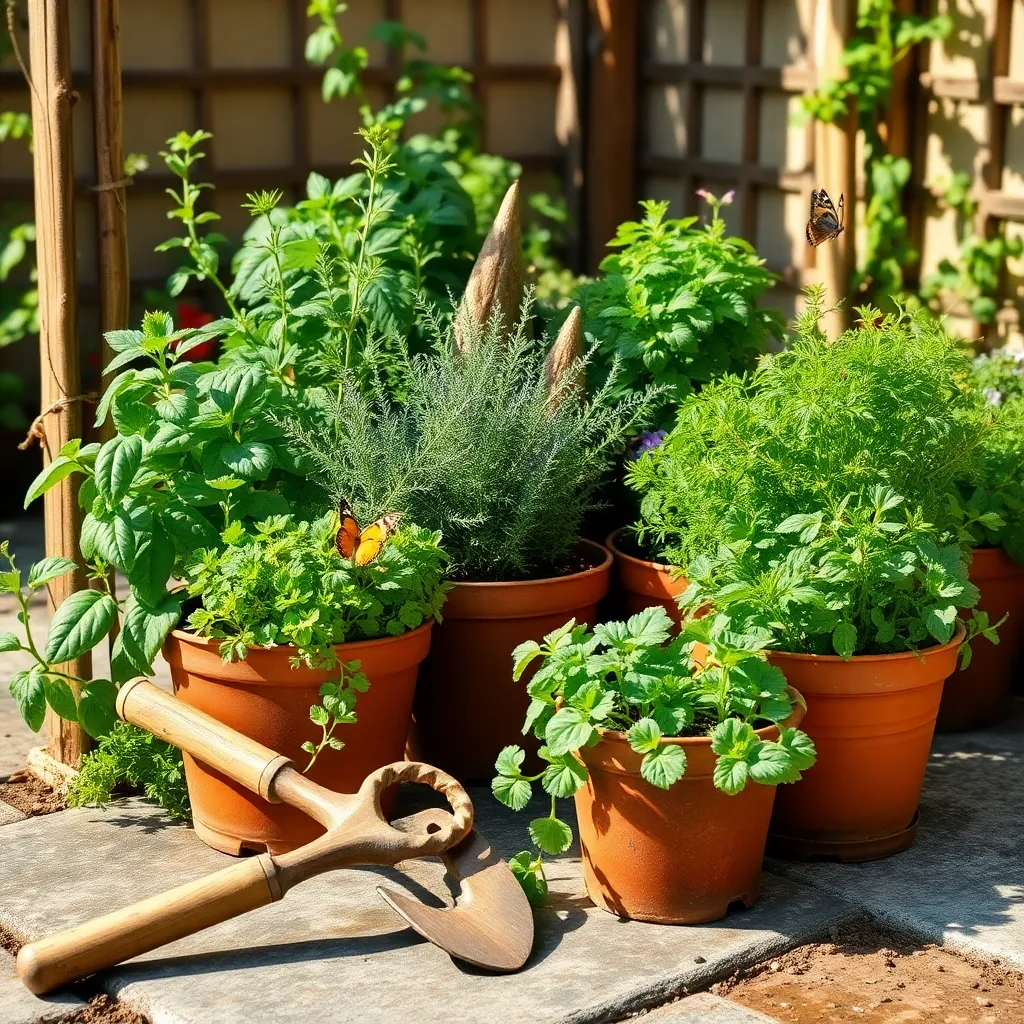
Compact herb garden hoes are essential for maintaining a healthy and productive herb garden. These tools are designed to help you easily maneuver around tight spaces in your herb garden, allowing you to cultivate and aerate the soil with precision.
When choosing a compact hoe, consider one with a narrow blade for intricate weeding and cultivation tasks. This feature allows you to work closely around the roots of your herbs without causing damage, ensuring that your plants have the best chance to thrive.
It’s important to regularly loosen the soil around your herbs to promote healthy root growth and prevent compaction. Using a hoe with a comfortable handle makes this task easier and more enjoyable, encouraging you to tend to your garden more frequently.
For those with more experience, consider using a hoe with interchangeable heads to suit different gardening tasks. This versatility can enhance your efficiency, allowing you to adapt to varying soil conditions and plant needs as your herb garden evolves.
Ergonomic Weed Pullers
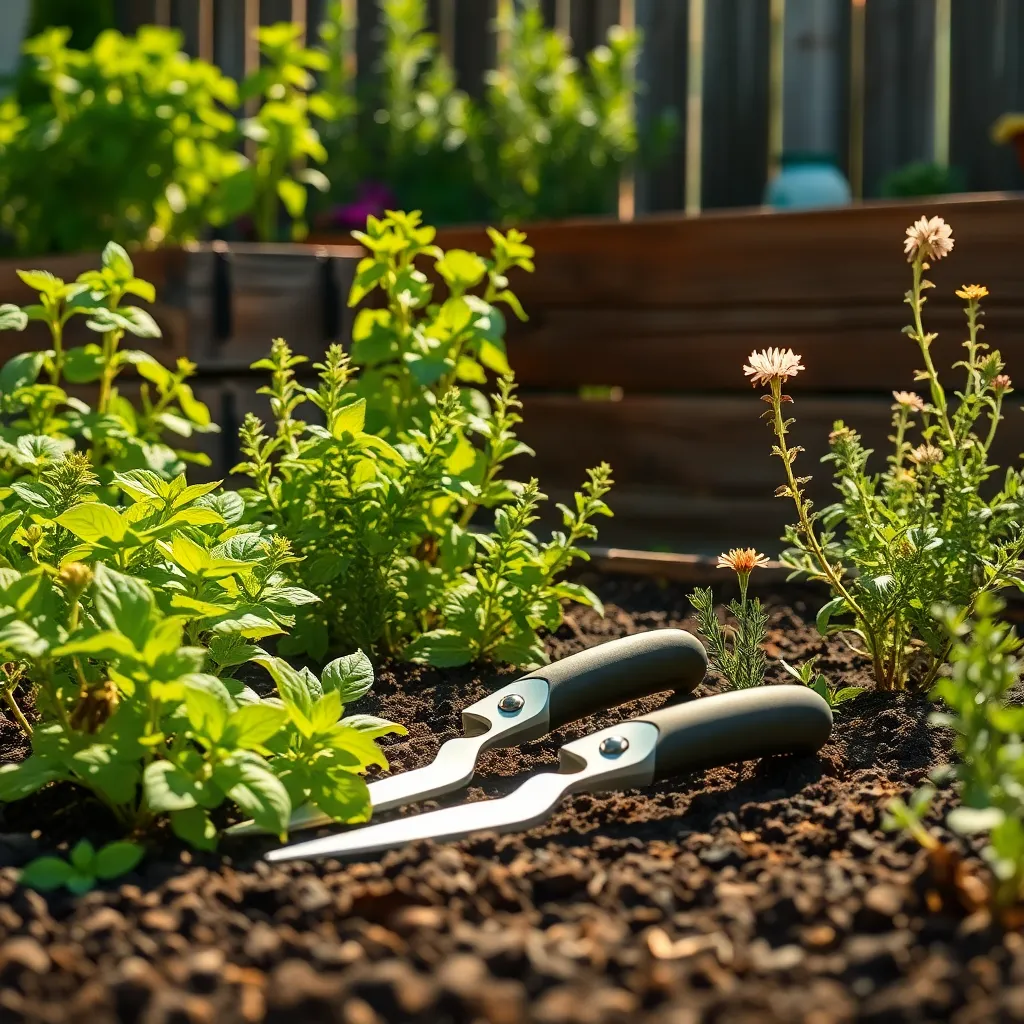
When tending to your herb garden, ergonomic weed pullers can be a lifesaver, helping you maintain a neat and healthy environment. These tools are designed to reduce strain on your hands and wrists, making the task of removing weeds more comfortable and efficient.
Consider choosing a weed puller with a cushioned handle and a long shaft to minimize bending and squatting. This is especially important for gardeners with back or joint issues, as it allows for prolonged use without discomfort.
For optimal results, use your weed puller after a rain or a deep watering session when the soil is soft. Soft soil makes it easier to remove weeds from the root, preventing regrowth and keeping your herbs thriving.
Be sure to clean and dry your weed puller after each use to extend its lifespan and maintain its effectiveness. A well-maintained tool ensures that you can tackle stubborn weeds season after season, keeping your herbs healthy and your garden pristine.
Multi-Purpose Gardening Aprons
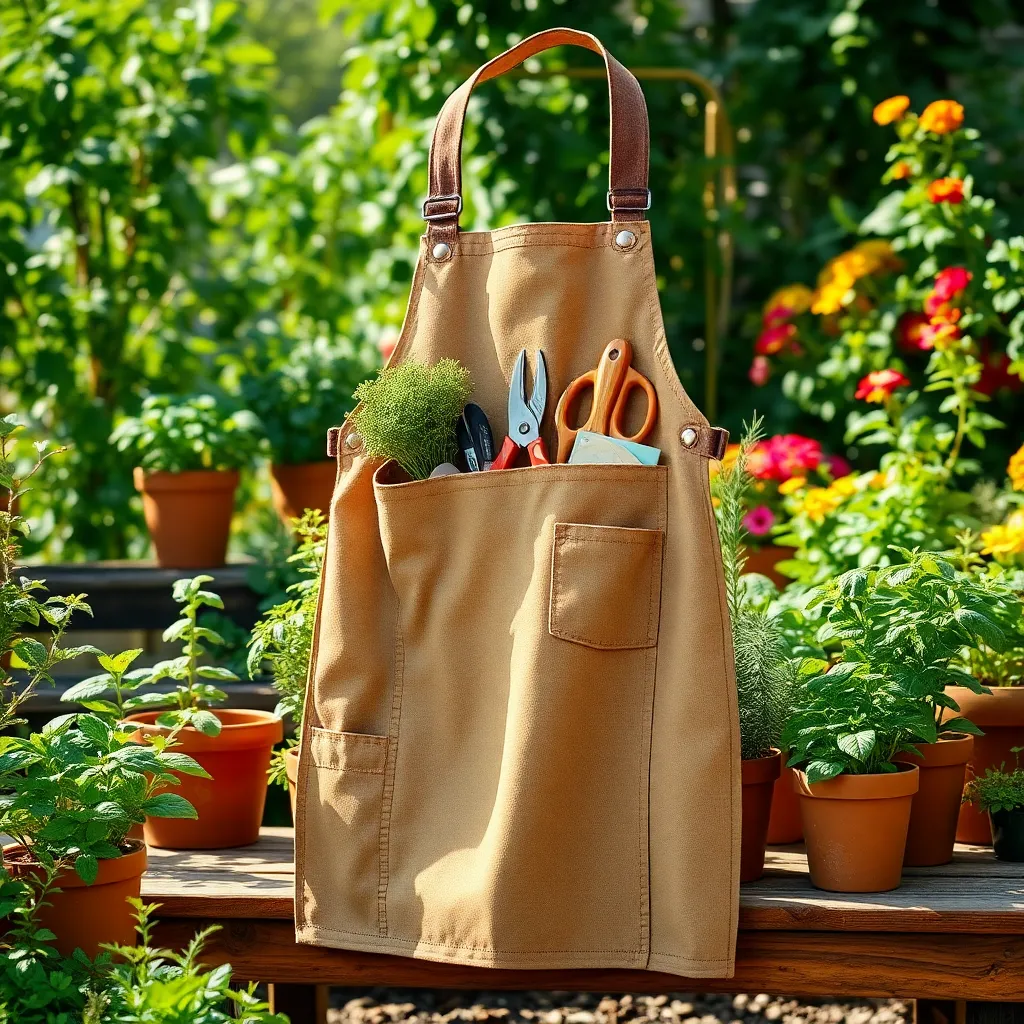
Multi-purpose gardening aprons are essential for keeping your tools and hands free while tending to your herb garden. Opt for aprons with several pockets to easily carry small tools, seed packets, or even your phone, ensuring everything you need is within reach.
Durable materials like canvas or denim are ideal for gardening aprons, as they can withstand the rigors of outdoor work. Look for aprons with water-resistant coatings to protect your clothes from soil and moisture when watering or harvesting herbs.
For those who love to multitask, some aprons come with built-in kneepads or detachable pouches, offering added comfort and convenience. This feature is particularly useful when you’re spending extended periods tending to plants like thyme or oregano, which require regular pruning to encourage bushy growth.
When selecting an apron, consider one with adjustable straps for a comfortable fit, allowing for easy movement as you garden. This adaptability is crucial when you’re harvesting herbs like basil or mint, which thrive in well-drained soil and need regular pinching to promote lush foliage.
Effective Pest Control Sprayers
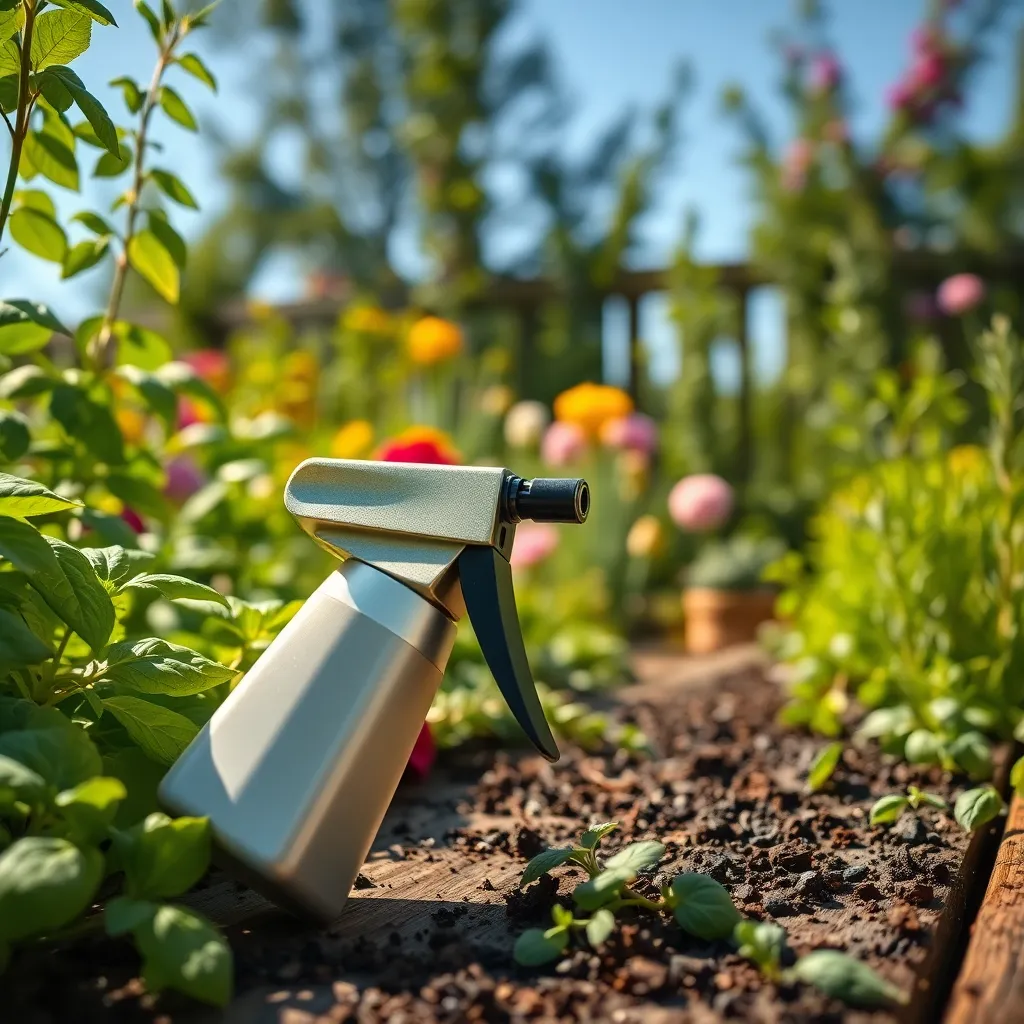
Effective pest control sprayers are essential for maintaining a healthy herb garden. To protect your herbs from unwanted pests, consider using a sprayer that allows for precise application of organic insecticides or homemade solutions.
Gardening enthusiasts will find backpack sprayers particularly useful for larger gardens, as they enable you to cover more ground without straining your back. For smaller herb gardens, a handheld pump sprayer is often sufficient, providing control and ease of use in tight spaces.
When choosing a sprayer, opt for models that offer adjustable nozzles, which are crucial for ensuring even coverage across different plant types. Adjustability allows you to switch between a fine mist for tender herbs and a stronger spray for more robust foliage.
For beginners, start with a simple solution of neem oil and water, which can deter a wide range of pests without harming your plants. Advanced gardeners might experiment with customized blends using essential oils like peppermint or rosemary, which have natural pest-repelling properties.
Sturdy Herb Growing Lights
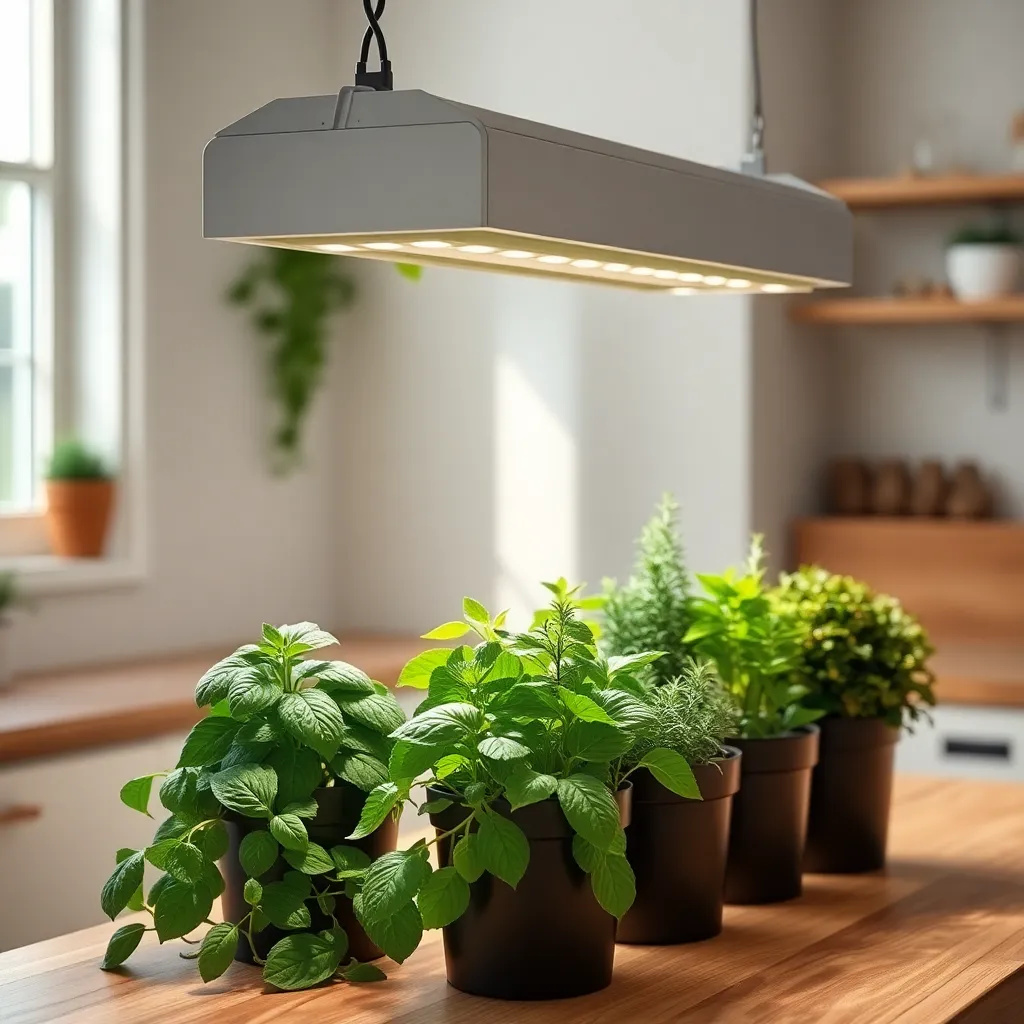
Herb gardening indoors can be greatly enhanced with the use of sturdy herb growing lights. These lights provide the essential spectrum of light that herbs need to thrive, especially during the winter months or in homes with limited natural sunlight.
When selecting a growing light, opt for LED lights as they are energy-efficient and have a long lifespan. They emit the full spectrum of light, which is ideal for herbs like basil and parsley that require ample light to flourish.
Place the lights about 6-12 inches above your herbs to mimic natural sunlight and promote healthy growth. It’s important to run the lights for about 12-16 hours a day, giving your herbs enough time to photosynthesize and grow robustly.
For more advanced gardeners, consider using a timer to automate the light schedule, ensuring consistent exposure without the need for manual intervention. This not only saves time but also maintains a regular light cycle that can improve the growth and flavor of your herbs.
Conclusion: Growing Success with These Plants
As we wrap up our journey through the ’15 Must-Have Tools for Herb Gardening,’ it’s clear that nurturing a thriving garden shares many parallels with cultivating successful relationships. Just as you need sturdy pruners and quality soil to foster healthy herbs, so too do relationships flourish with trust, communication, and mutual respect. From understanding the importance of patience and consistency to recognizing the value of setting boundaries and expressing gratitude, each tool we explored provides a metaphorical lens through which we can enhance our interpersonal connections.
Now, take a moment to choose one tool or concept that resonated with you and implement it in your relationships today. Whether it’s actively listening or sharing your appreciation, small actions can lead to significant growth.
I encourage you to bookmark this article as a handy guide, ensuring these insights remain accessible whenever you need a relationship refresher. Remember, every relationship is a dynamic garden, and with the right tools, you can nurture them to bloom beautifully. As you apply these principles, look forward to a future filled with meaningful connections and abundant joy. Your journey to relationship success begins now!

